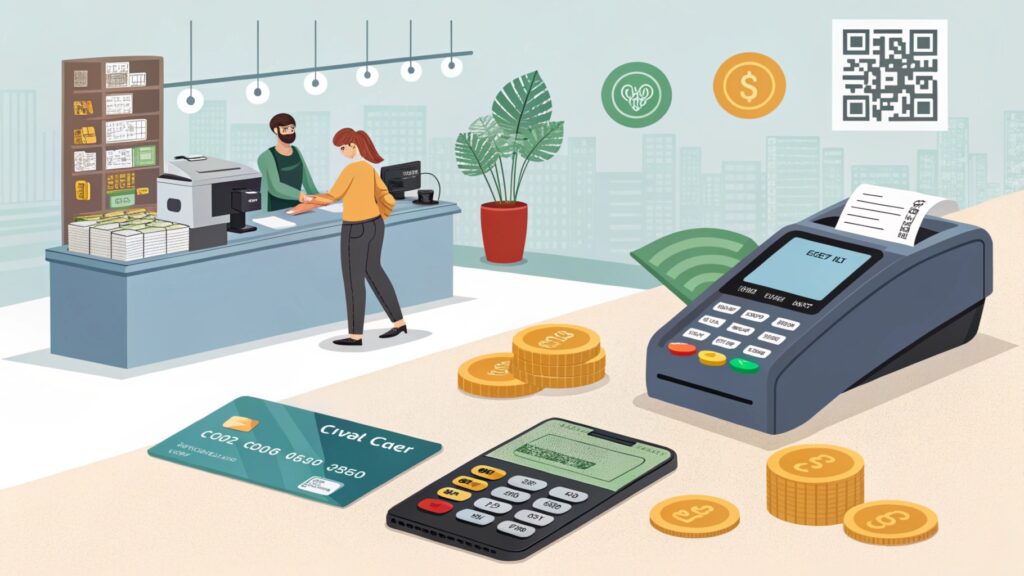In today’s interconnected economy, efficient domestic payment processing methods are the backbone of financial transactions within a country. From paying utility bills to completing high-value corporate transactions, these systems ensure that money moves seamlessly and securely between individuals, businesses, and institutions. As digital transformation reshapes the financial landscape, traditional methods like checks and bank transfers coexist with innovative solutions such as real-time payments and mobile wallets. This article delves into the various domestic payment processing methods, examining their mechanisms, advantages, and the role they play in fostering economic growth and convenience. Whether you’re a consumer, business owner, or financial professional, understanding these methods is essential to navigating the evolving world of payments.
Instant Payments, Clearing Payments (ACH), and Real-Time Gross Settlement (RTGS) represent three distinct types of domestic payment processing methods, each with unique characteristics related to speed, transaction volume, and settlement finality. Here’s a breakdown of their differences:
1. Instant Payments
Instant payments, also known as real-time payments, are designed for rapid, low-value transactions and offer immediate transfer of funds between payer and payee, typically within seconds.
- Speed: Instant payments are processed and settled within seconds, making funds available to the recipient almost immediately.
- Availability: Instant payment systems usually operate 24/7, including weekends and holidays, providing continuous payment capability.
- Clearing and Settlement: Instant payments often involve near-real-time clearing and immediate settlement. The settlement can be either on a deferred net settlement basis or real-time, depending on the system design.
- Use Cases: Instant payments are commonly used for peer-to-peer (P2P) transfers, e-commerce payments, bill payments, and any situation requiring immediate funds availability.
- Examples: Examples of instant payment systems include the Faster Payments Service (FPS) in the UK, SEPA Instant Credit Transfer (SCT Inst) in the EU, and UPI in India.
2. Clearing Payments (ACH Payments)
Clearing payments refer to the process of verifying and reconciling transactions before final settlement, which typically occurs at set intervals (such as end-of-day).
- Speed: Clearing payments are usually processed in batches, meaning transactions may not settle immediately. Depending on the system, they can take several hours or be cleared and settled by the end of the day.
- Availability: Clearing systems may operate only during specific hours or days, often excluding weekends and holidays.
- Clearing and Settlement: Clearing is done in batches, and the netted transactions are settled at set intervals, such as end-of-day or at designated times. This process is referred to as Deferred Net Settlement (DNS).
- Use Cases: Clearing payments are common for low- to medium-value transactions, including payroll processing, batch bill payments, and other regular payments where real-time funds availability is not critical.
- Examples: Automated Clearing House (ACH) in the U.S., Bankers’ Automated Clearing Services (BACS) in the UK, and Electronic Funds Transfer (EFT) systems in various countries are examples of clearing payment systems.
3. Real-Time Gross Settlement (RTGS)
RTGS systems are used for high-value, urgent transactions that require immediate, final settlement between financial institutions, typically in real time.
- Speed: RTGS transactions are settled instantly on an individual basis, not batched or deferred, ensuring immediate finality of each transaction.
- Availability: RTGS systems generally operate during business hours, though some are moving toward 24/7 availability. Central banks typically operate RTGS systems.
- Clearing and Settlement: Transactions in RTGS systems are settled on a gross basis, meaning each payment is settled individually and not netted against other payments. The transactions are final and irrevocable once settled.
- Use Cases: RTGS systems are used for high-value interbank payments, large corporate payments, securities settlement, and other transactions requiring immediate, risk-free settlement.
- Examples: Examples include the Federal Reserve’s Fedwire in the U.S., TARGET2 in the Eurozone, and the RTGS system operated by the Reserve Bank of India.
Summary of Key Differences
| Feature | Instant Payments | Clearing Payments | Real-Time Gross Settlement (RTGS) |
| Speed | Immediate (within seconds) | Batch processing (hours to end of day) | Immediate, in real time |
| Availability | 24/7, 365 days | Limited hours (typically excludes holidays) | Business hours (some moving toward 24/7) |
| Clearing | Near-instant clearing | Deferred, netted at specific intervals | Not applicable (gross, individual clearing) |
| Settlement | Immediate or deferred net settlement | Deferred net settlement | Immediate, gross settlement |
| Use Cases | P2P transfers, e-commerce, bill payments | Payroll, recurring bills, batch payments | High-value interbank, corporate transactions |
| Examples | FPS (UK), SCT Inst (EU), UPI (India) | ACH (U.S.), BACS (UK), EFT systems | Fedwire (U.S.), TARGET2 (EU), RTGS (India) |
In summary, instant payments are designed for immediate, small-value transactions; clearing payments handle medium- to low-value payments that don’t require immediate settlement and operate in batches; and RTGS systems focus on high-value, time-critical payments that require real-time settlement with finality. Each method addresses specific needs in the payment ecosystem, balancing speed, cost, and security for different transaction types.



